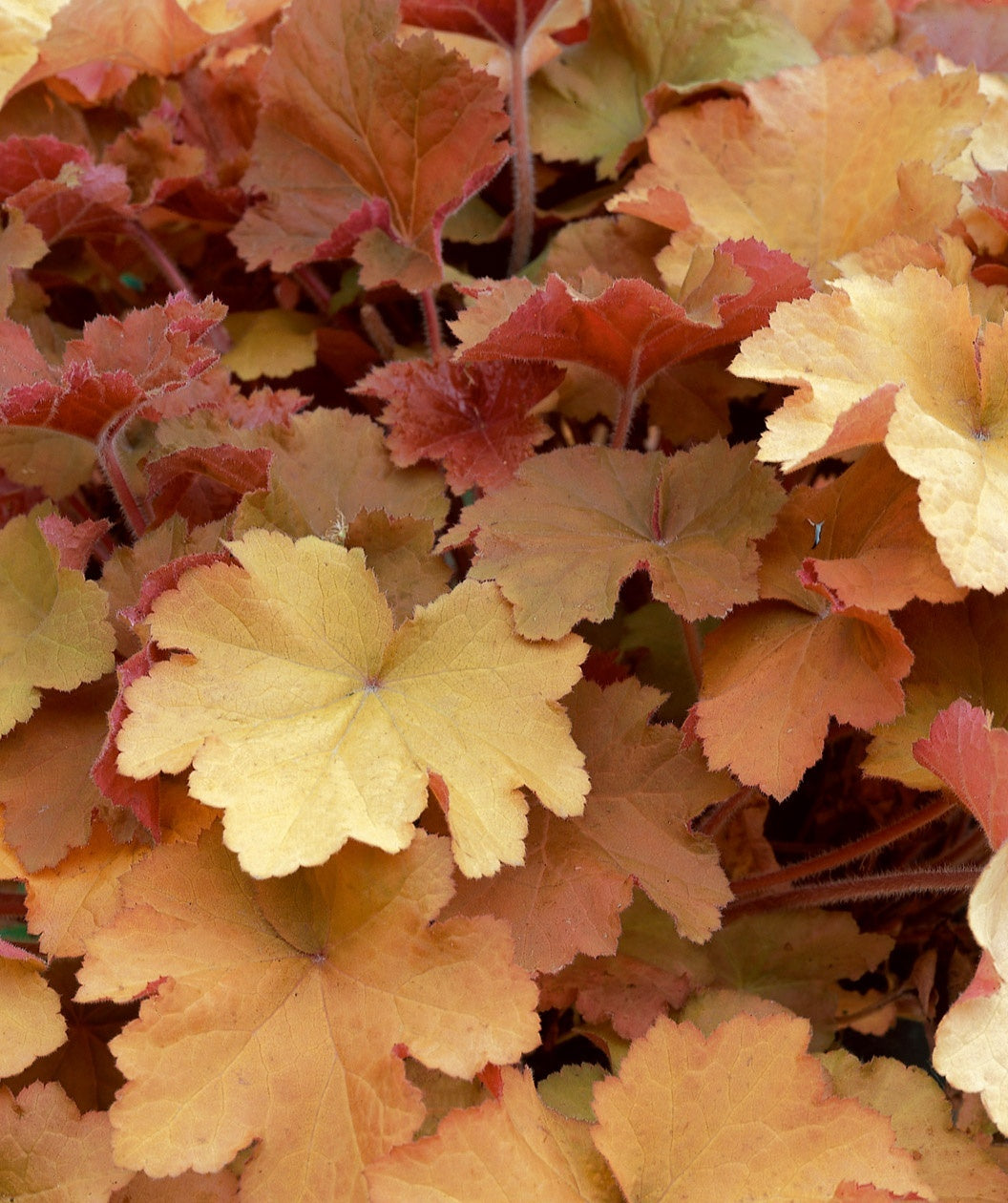LARGE AND VARIEGATED HEART-SHAPED LEAVES
FEATURES:
- Large variegated leaves are shaped like caramel-colored hearts
- Thrives in heat and humidity
- Attracts lots of butterflies and hummingbirds
- Pest and disease resistant
- Hand Selected, Fresh from the Grower
- Ships in a plant-safe designed box
Growth Facts
- Hardiness Zone: 4-9
- Mature Height: 0.75-1.5' tall
- Mature Width: 1-2' wide
- Exposure: Full Sun/Part Shade
- Spacing: 1-2' apart
LARGE AND VARIEGATED HEART-SHAPED LEAVES
FEATURES:
- Large variegated leaves are shaped like caramel-colored hearts
- Thrives in heat and humidity
- Attracts lots of butterflies and hummingbirds
- Pest and disease resistant
- Hand Selected, Fresh from the Grower
- Ships in a plant-safe designed box
Growth Facts
- Hardiness Zone: 4-9
- Mature Height: 0.75-1.5' tall
- Mature Width: 1-2' wide
- Exposure: Full Sun/Part Shade
- Spacing: 1-2' apart
Why plant Caramel Coral Bells?
Eye candy! Coral Bells come in an incredible array of tantalizing colors and forms these days, but this one is especially hard to resist. Caramel Coral Bells will light up your entryway garden, mixed border, or patio plantings with dreamy hues. When the large leaves first unfurl, they’re a smoky scarlet color; they soon soften to a lovely tawny peach, progressing to amber-gold and chartreuse. In summer breezes, you may also get glimpses of the purple undersides. Caramel is more tolerant of heat and humidity than other Coral Bells, which makes it a sweet choice even in the South. So pretty.
Coral Bells are native Spirits that grow all over North America in different forms. Up until the 1990s, gardeners considered them to be nice garden plants, but nothing too spectacular. Then breeders began to make crosses, and exciting new Coral Bells in brilliant colors began to appear. Caramel Coral Bells originated at the nursery of Sandrine and Thierry Delabroye in Hantay, France. The Delabroyes selected it from a crop of open-pollinated seedlings in 2003. One of the probable parents, Autumn Pride Coral Bells, is what gives Caramel its excellent heat and humidity tolerance.
How to use Caramel Coral Bells in the landscape?
Flowers, too! Caramel Coral Bells is grown primarily for its captivating amber-peach foliage, but its blooms are a nice bonus. In early summer, tiny, airy white blossoms rise on slim stems, making a lovely accompaniment to the earth-toned leaves. This cute and colorful shrub is the perfect plant to incorporate into your ground-cover or help edge your pathway and driveways. These pretty babies attract butterflies like it's their job! You'll never get tire of its presence in your garden.
Planting Zones
Hardiness Zone: 4-9
How To Plant Caramel Coral Bells
Most Coral Bells do best in morning sun, with shade during the hottest part of the day. Bright light will bring out the richest coloring in their foliage, but intense sun can scorch some varieties. Plant Caramel in rich, organic, well-drained soil that is moist but never soggy. Trim off spent flower spikes if you find them unattractive. Caramel is evergreen; clean up any winter-damaged foliage in early spring. Black vine weevils can be a problem in some areas. You can control them organically with beneficial nematodes if this is the case, or simply keep your Coral Bells in containers.
How To Water
Water as soon as they arrive! Coral Bells need to be watered regularly to maintain evenly moist soil for proper establishment in the landscape.
How To Fertilize
When fertilizing the Caramel Coral Bells, apply a balanced slow-release granular fertilizer in the springtime. Fertilizing this plant is not required but if you'd like to give your plant a growth jumpstart then we recommend using out Elements Starter Plant Food!
How To Prune
Remove the stems of any faded flowers in the late fall to pave the way for new healthy growth. It is not hard to keep this beauty looking beautiful!





